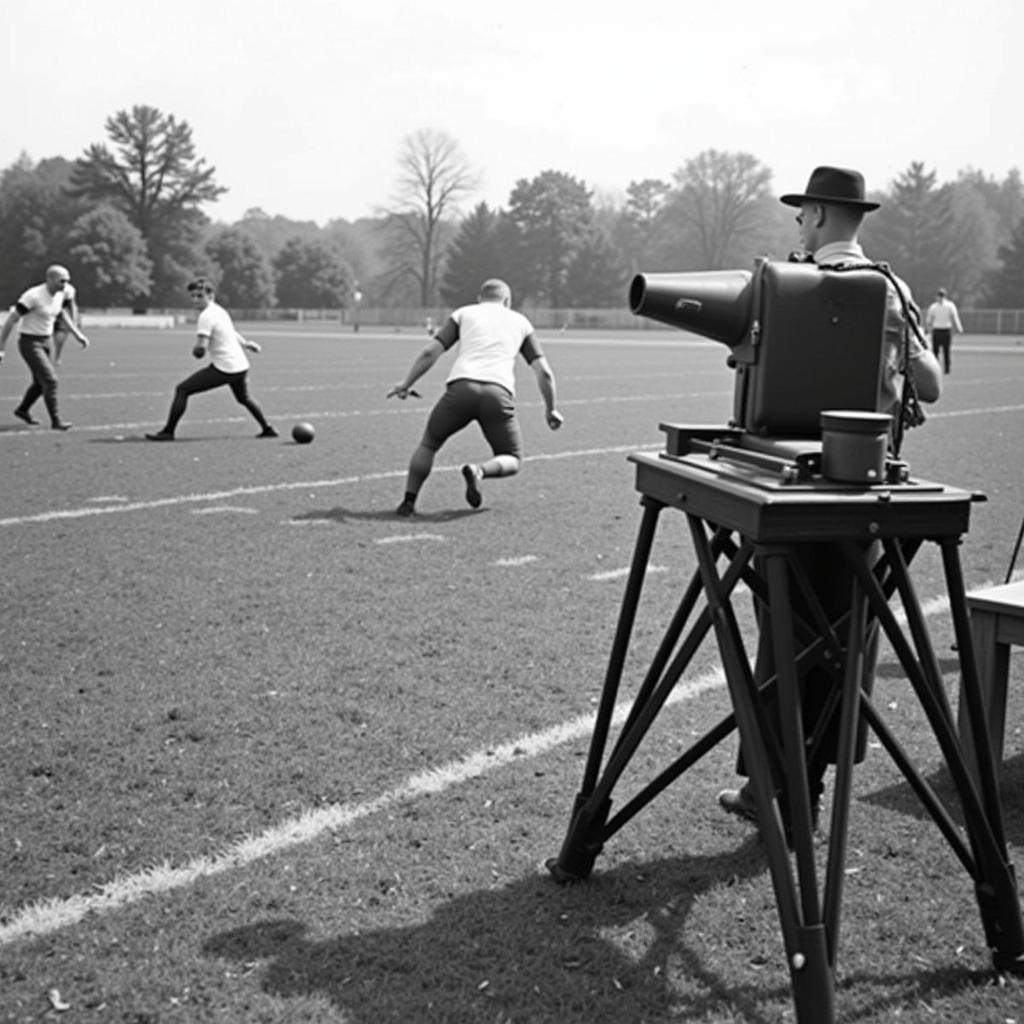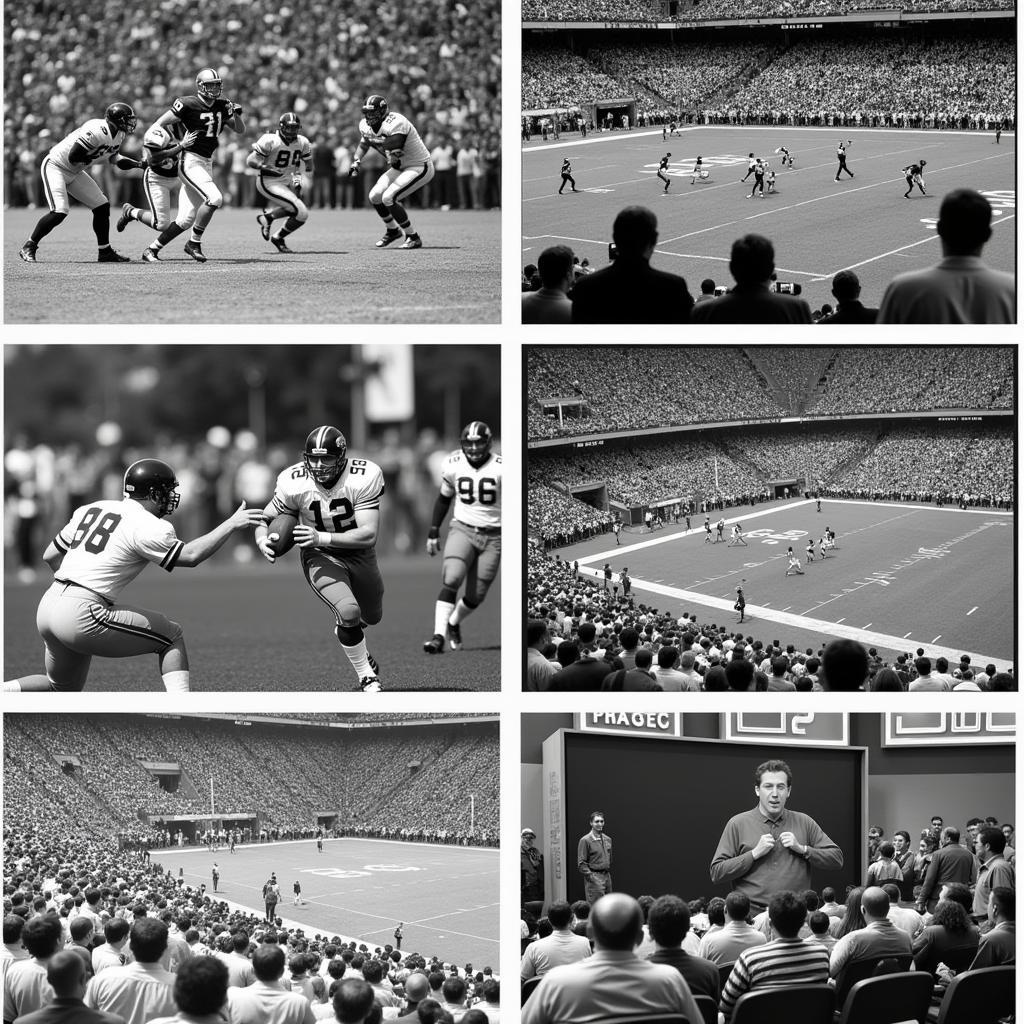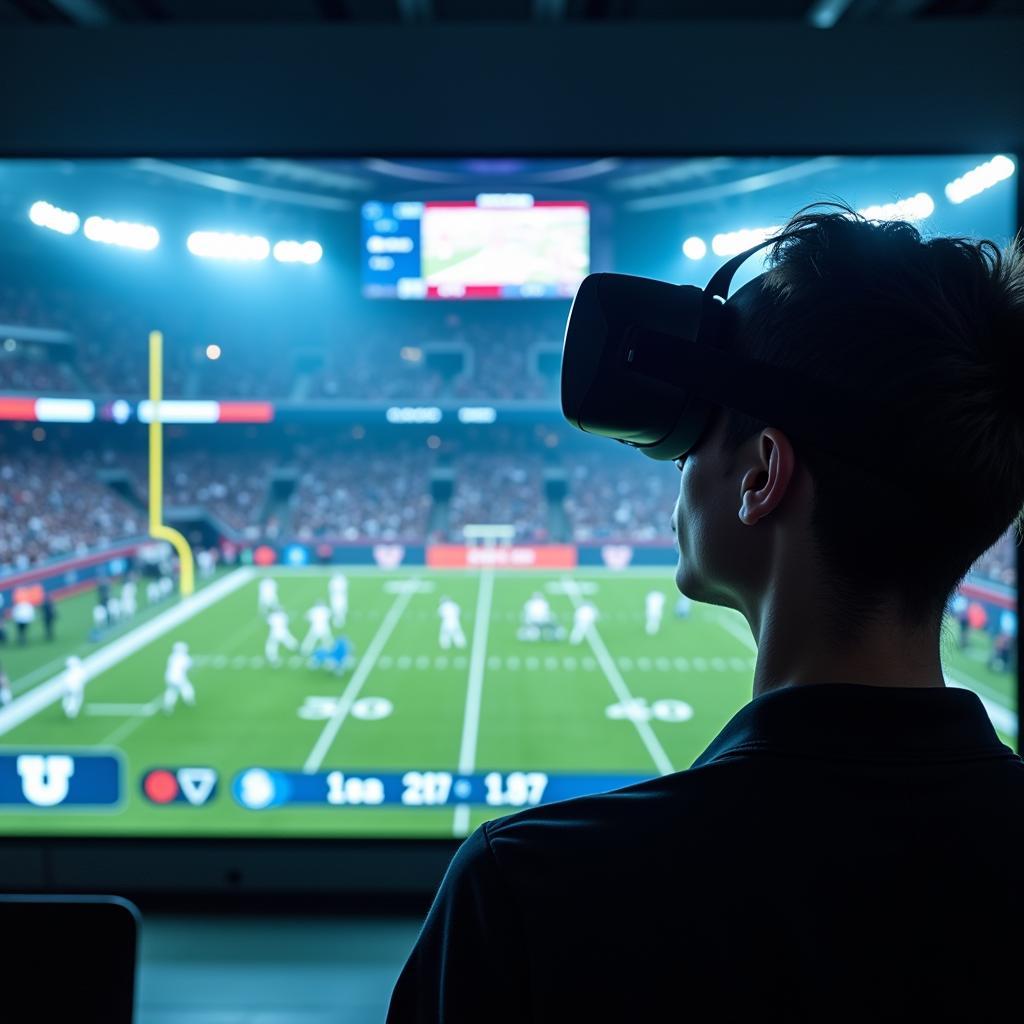The First Live Televised College Football Game marked a pivotal moment in sports broadcasting history, forever changing how fans experienced the game. On September 30, 1939, Fordham University and Waynesburg College clashed on the gridiron, unaware they were making history. This groundbreaking broadcast paved the way for the multi-billion dollar industry we know today, impacting everything from game attendance to player recruitment.
How it all Began: The 1939 Fordham vs. Waynesburg Game
The game, held at Triborough Stadium on Randall’s Island in New York City, saw Fordham dominate Waynesburg with a final score of 34-7. While the outcome itself might not be memorable, the method of delivery was revolutionary. NBC, a relatively new network at the time, experimentally broadcast the game to a small audience of approximately 1,000 television sets in New York City. Imagine the excitement of those early viewers, witnessing the future unfold before their eyes. This historic broadcast not only showcased the potential of television but also foreshadowed the immense popularity college football would achieve in the coming decades. It’s fascinating to consider how different the sports landscape would be without this pioneering moment. The game truly was a landmark event, opening doors for a new era of sports consumption.
After the first few paragraphs about the inaugural game, you might naturally wonder about the evolution of televised football. The advancements in technology and broadcasting techniques have dramatically enhanced the viewing experience, transforming it from a grainy black-and-white image to the high-definition spectacle we enjoy today. From the initial experiment in 1939, we’ve come a long way, haven’t we? Check out our coverage of an ep football game live.
 Fordham-Waynesburg-1939-First-Televised-College-Football-Game
Fordham-Waynesburg-1939-First-Televised-College-Football-Game
The Impact of the First Live Televised College Football Game
The impact of the first live televised college football game was profound. It laid the groundwork for the massive media empires that surround sports today. This initial broadcast sparked a revolution in sports entertainment, changing the relationship between fans and the game. It allowed a broader audience to experience the thrill of college football, ultimately contributing to its growth in popularity and influence. This event wasn’t just a game; it was the birth of a new era.
How did this impact future broadcasts?
The first live televised college football game set a precedent for future broadcasts. It spurred technological advancements, driving innovation in camera techniques, audio quality, and overall production value. This initial broadcast served as a catalyst for improvements, pushing networks to refine their methods and deliver a more engaging experience for viewers.
 Evolution-of-Televised-College-Football-Broadcasts-From-1939-to-Present
Evolution-of-Televised-College-Football-Broadcasts-From-1939-to-Present
The influence of that first game can be seen in today’s high-definition broadcasts, interactive features, and online streaming options. From a small, experimental broadcast to a multi-faceted industry, the journey of televised college football is remarkable. You can find more about current live coverage options with our clemson football live coverage guide. The 1939 game set the wheels in motion for a transformation in how we consume sports, forever shaping the landscape of entertainment and fandom.
The Future of College Football Broadcasting
What’s next for college football broadcasting? The future looks bright, with advancements in virtual reality, augmented reality, and interactive viewing experiences on the horizon. These technologies promise to further immerse fans in the game, bringing them closer to the action than ever before. Imagine experiencing a game from the perspective of your favorite player or interacting with virtual elements on the field.
What technologies will shape the future?
Emerging technologies like VR and AR will likely play a significant role in shaping the future of college football broadcasting. These technologies offer the potential for personalized and interactive experiences, allowing fans to tailor their viewing to their individual preferences. Imagine being able to choose different camera angles, access real-time statistics, or even interact with other fans in a virtual stadium environment. Catch the latest games with our live stream arkansas football game link.
 Future-of-Televised-College-Football-Virtual-Reality-Integration
Future-of-Televised-College-Football-Virtual-Reality-Integration
Conclusion
The first live televised college football game between Fordham and Waynesburg in 1939 was a watershed moment. It marked the beginning of a new era in sports broadcasting, paving the way for the technologically advanced and highly engaging broadcasts we enjoy today. This pioneering event transformed how we consume sports, creating a lasting legacy that continues to shape the future of college football. Want to explore live streaming options for more college football action? Check out the harding university football live stream.
FAQ
- When was the first live televised college football game? September 30, 1939.
- Who played in the first televised game? Fordham University and Waynesburg College.
- Which network broadcast the first game? NBC.
- Where was the game played? Triborough Stadium, Randall’s Island, New York City.
- What was the final score? Fordham 34, Waynesburg 7.
- How did the first televised game impact the sport? It revolutionized sports broadcasting and increased college football’s popularity.
- What is the future of college football broadcasting? Technologies like VR and AR promise more immersive and interactive experiences.
Need support? Contact us 24/7 at Phone: 0869066600, Email: [email protected] or visit us at 491 An Duong Vuong Street, Binh Tan District, Ho Chi Minh City 71907, Vietnam.